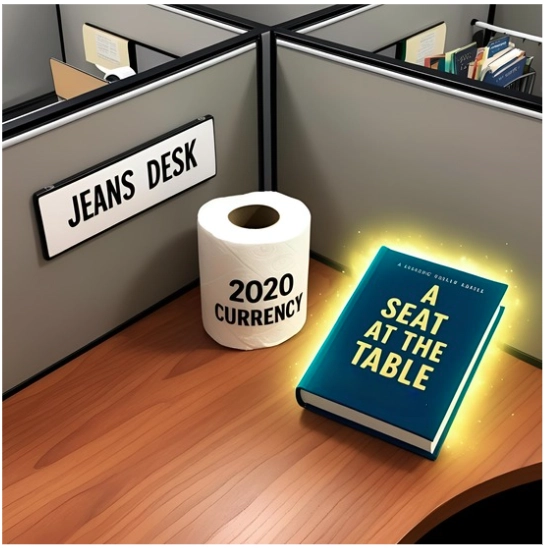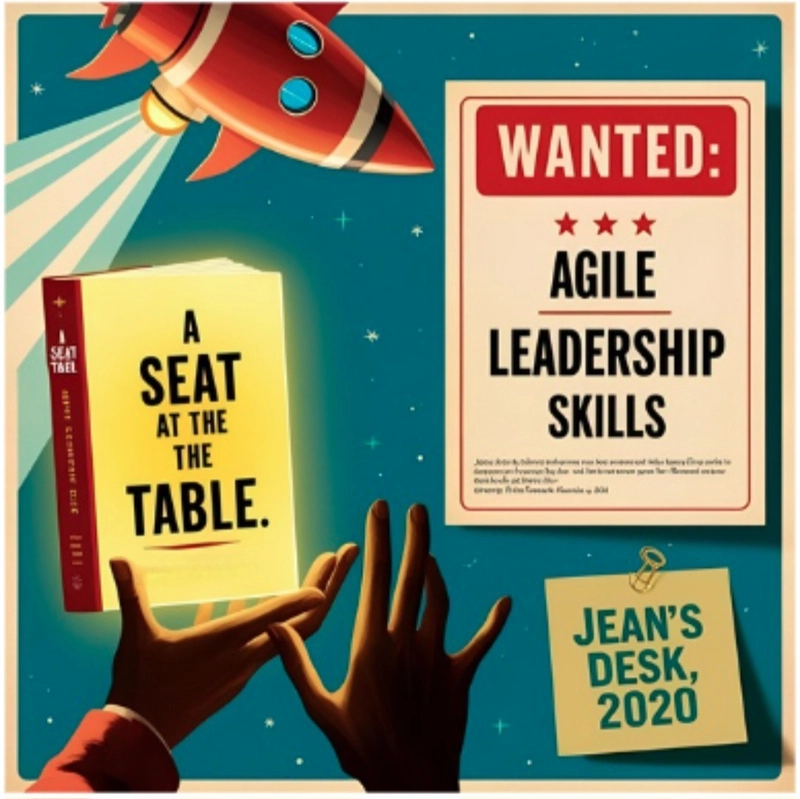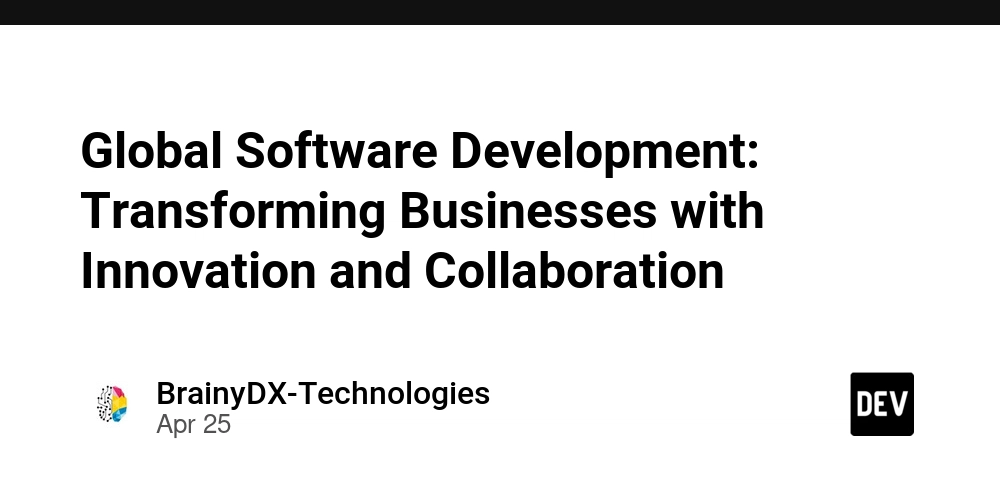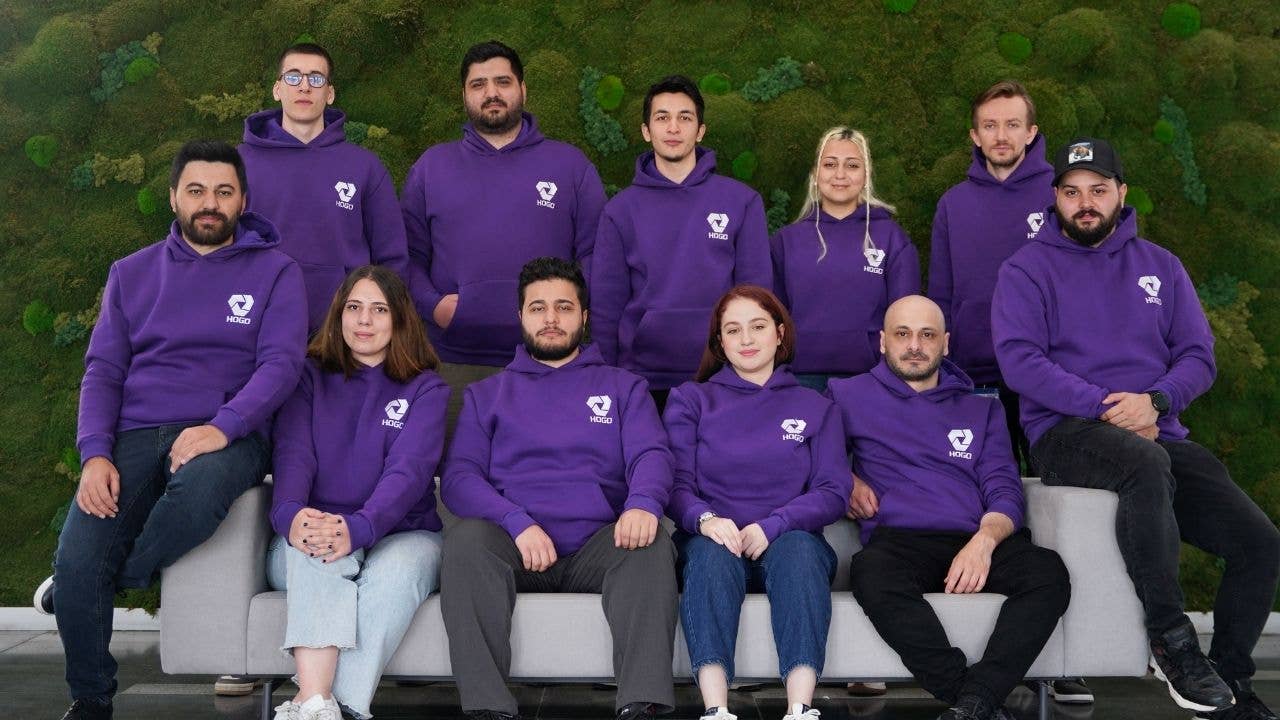How a Pandemic-Era Book Became My IT Leadership GPS
The COVID Treasure Hunt: When ‘Borrowed’ Wisdom Found Me Picture this: It’s March 2020. The world is panicking, toilet paper is currency, and your LinkedIn feed is suddenly 90% sourdough tutorials. Meanwhile, at Absa, my former boss, Jean, had just vacated his desk, leaving behind a lone book: A Seat at the Table by Mark Schwartz. “Sometimes, the best leadership advice is hiding in plain sight, like a forgotten book on a deserted desk during a pandemic. Thanks, Jean!” I asked if I could “borrow” it. He said, “Keep it.” Little did I know that book would become my North Star in the chaotic galaxy of IT leadership which I still read over and over again to this day. Why This Book Isn’t Just for CIOs (But Definitely for Anyone Who Wants to Stop Being a “Shadow IT Gandalf”) So, what was Schwartz’s core message? IT leaders need to stop acting like order-takers and start owning their seat at the business strategy table. Sounds obvious, right? But here’s the kicker: Agile, DevOps, and Lean aren’t just methodologies—they’re invitations to lead with courage. Let’s face it, Too many IT leaders are stuck playing the role of “Shadow IT Gandalf”, muttering cryptic incantations about “bandwidth” and “latency” while being relegated to the sidelines of strategic decision-making. Schwartz flips the script. He argues that IT isn’t just a support function, it’s the engine of innovation and value creation. “Shadow IT Gandalf vs. Corporate Leader: One mutters about ‘bandwidth,’ the other owns the strategy table. Which one are you?” My biggest takeaways: 1️⃣ Break Up with Bureaucracy: Schwartz made me realize that clinging to outdated governance models is like using a fax machine in a Zoom world. Annual budgeting? Waterfall project plans? Schwartz calls these “relics of a bygone era.” Instead, he champions iterative funding, adaptive planning, and a culture of experimentation. (Yes, that means it’s okay to fail fast and learn faster.) 2️⃣ Embrace the “Why”: IT exists to create value, not just fix printers. (Though if you’ve ever fixed a printer mid-meeting, you’re already a hero.) Schwartz challenges IT leaders to align every project, every sprint, and every line of code with the broader goals of the business. Ask yourself: How does this initiative drive revenue, improve customer experience, or reduce risk? If you can’t answer that, it’s time to rethink your priorities. 3️⃣ Lead with Humility and Humor: Because no one follows a leader who thinks “sprint planning” is a CrossFit class. Schwartz’s wit and candor are a breath of fresh air in an industry often bogged down by jargon and ego. He reminds us that leadership isn’t about having all the answers, it’s about asking the right questions, listening deeply, and fostering a culture of trust and collaboration. From Pandemic Panic to Agile Zen Schwartz’s lessons have become my leadership compass. One defining moment was solving a critical infrastructure challenge at Absa when our primary biometric device supplier faced shortages. We needed to rapidly integrate new Digital Persona devices alongside existing Lumidigm devices on single PCs for staff and customer authentication. “From chaos to calm: How A Seat at the Table turned my IT leadership journey into a masterclass in Agile Zen.” The project was a minefield. Facing tight deadlines, new architecture, and minimal documentation, I focused on delivering value: seamless authentication for customer trust and compliance. I developed a proof-of-concept, implemented dual-device operations with robust error handling, and ensured security compliance. The result? We met deadlines, avoided disruptions, maintained compliance, saved costs, and the solution became a standard part of our biometric infrastructure. This wasn’t just about solving a technical problem, it was about delivering value under pressure. It’s the kind of leadership Schwartz champion. Gene Kim wasn’t kidding when he called this book “one of the most important of our generation.” It’s not about doing Agile; it’s about being Agile. Fast-forward to today, as I work on combining emerging technologies with agriculture, Schwartz’s principles continue to guide me. Whether it’s leveraging AI for crop prediction, IoT for smart irrigation, or blockchain for supply chain transparency, the question remains: How does this create value for farmers, consumers, and the planet? Schwartz’s emphasis on aligning IT with business objectives has been transformative. In Agri-Tech, it’s not just about deploying cutting-edge tools, it’s about ensuring they solve real-world problems, like increasing yield, reducing waste, and improving livelihoods. His book reminds me that leadership isn’t about chasing shiny objects, it’s about driving meaningful impact. Your Turn: Steal This Book (Or At Least Borrow It) If you’re an IT leader still waiting for an engraved invitation to the strategy table, here’s your sign: Stop waiting. Grab this book, chan

The COVID Treasure Hunt: When ‘Borrowed’ Wisdom Found Me
Picture this: It’s March 2020. The world is panicking, toilet paper is currency, and your LinkedIn feed is suddenly 90% sourdough tutorials. Meanwhile, at Absa, my former boss, Jean, had just vacated his desk, leaving behind a lone book: A Seat at the Table by Mark Schwartz.
 “Sometimes, the best leadership advice is hiding in plain sight, like a forgotten book on a deserted desk during a pandemic. Thanks, Jean!”
“Sometimes, the best leadership advice is hiding in plain sight, like a forgotten book on a deserted desk during a pandemic. Thanks, Jean!”
I asked if I could “borrow” it. He said, “Keep it.” Little did I know that book would become my North Star in the chaotic galaxy of IT leadership which I still read over and over again to this day.
Why This Book Isn’t Just for CIOs (But Definitely for Anyone Who Wants to Stop Being a “Shadow IT Gandalf”)
So, what was Schwartz’s core message? IT leaders need to stop acting like order-takers and start owning their seat at the business strategy table. Sounds obvious, right? But here’s the kicker: Agile, DevOps, and Lean aren’t just methodologies—they’re invitations to lead with courage.
Let’s face it, Too many IT leaders are stuck playing the role of “Shadow IT Gandalf”, muttering cryptic incantations about “bandwidth” and “latency” while being relegated to the sidelines of strategic decision-making. Schwartz flips the script. He argues that IT isn’t just a support function, it’s the engine of innovation and value creation.
 “Shadow IT Gandalf vs. Corporate Leader: One mutters about ‘bandwidth,’ the other owns the strategy table. Which one are you?”
“Shadow IT Gandalf vs. Corporate Leader: One mutters about ‘bandwidth,’ the other owns the strategy table. Which one are you?”
My biggest takeaways:
1️⃣ Break Up with Bureaucracy: Schwartz made me realize that clinging to outdated governance models is like using a fax machine in a Zoom world. Annual budgeting? Waterfall project plans? Schwartz calls these “relics of a bygone era.” Instead, he champions iterative funding, adaptive planning, and a culture of experimentation. (Yes, that means it’s okay to fail fast and learn faster.)
2️⃣ Embrace the “Why”: IT exists to create value, not just fix printers. (Though if you’ve ever fixed a printer mid-meeting, you’re already a hero.) Schwartz challenges IT leaders to align every project, every sprint, and every line of code with the broader goals of the business. Ask yourself: How does this initiative drive revenue, improve customer experience, or reduce risk? If you can’t answer that, it’s time to rethink your priorities.
3️⃣ Lead with Humility and Humor: Because no one follows a leader who thinks “sprint planning” is a CrossFit class. Schwartz’s wit and candor are a breath of fresh air in an industry often bogged down by jargon and ego. He reminds us that leadership isn’t about having all the answers, it’s about asking the right questions, listening deeply, and fostering a culture of trust and collaboration.
From Pandemic Panic to Agile Zen
Schwartz’s lessons have become my leadership compass. One defining moment was solving a critical infrastructure challenge at Absa when our primary biometric device supplier faced shortages. We needed to rapidly integrate new Digital Persona devices alongside existing Lumidigm devices on single PCs for staff and customer authentication.
 “From chaos to calm: How A Seat at the Table turned my IT leadership journey into a masterclass in Agile Zen.”
“From chaos to calm: How A Seat at the Table turned my IT leadership journey into a masterclass in Agile Zen.”
The project was a minefield. Facing tight deadlines, new architecture, and minimal documentation, I focused on delivering value: seamless authentication for customer trust and compliance. I developed a proof-of-concept, implemented dual-device operations with robust error handling, and ensured security compliance. The result? We met deadlines, avoided disruptions, maintained compliance, saved costs, and the solution became a standard part of our biometric infrastructure.
This wasn’t just about solving a technical problem, it was about delivering value under pressure. It’s the kind of leadership Schwartz champion. Gene Kim wasn’t kidding when he called this book “one of the most important of our generation.” It’s not about doing Agile; it’s about being Agile.
Fast-forward to today, as I work on combining emerging technologies with agriculture, Schwartz’s principles continue to guide me. Whether it’s leveraging AI for crop prediction, IoT for smart irrigation, or blockchain for supply chain transparency, the question remains: How does this create value for farmers, consumers, and the planet?
Schwartz’s emphasis on aligning IT with business objectives has been transformative. In Agri-Tech, it’s not just about deploying cutting-edge tools, it’s about ensuring they solve real-world problems, like increasing yield, reducing waste, and improving livelihoods. His book reminds me that leadership isn’t about chasing shiny objects, it’s about driving meaningful impact.
Your Turn: Steal This Book (Or At Least Borrow It)
If you’re an IT leader still waiting for an engraved invitation to the strategy table, here’s your sign: Stop waiting. Grab this book, channel your inner Schwartz, and remember: The only thing scarier than change is irrelevance.
This isn’t just a book, it’s a manifesto for modern IT leadership. It’s a call to arms for anyone tired of being the “tech whisperer” in the corner and ready to step into the spotlight as a strategic partner.
And if you’re ever in a post-pandemic office scavenger hunt? Check the abandoned desks. You might just find gold. (Or at least a dog-eared copy of A Seat at the Table.)
 “Your leadership lifeline is waiting. Will you reach for it?”
“Your leadership lifeline is waiting. Will you reach for it?”
Final Thought
Leadership isn’t about titles or corner offices. It’s about courage, curiosity, and the willingness to challenge the status quo. So, whether you’re a CIO, a team lead, or an aspiring IT leader, take your seat at the table. The view is better from here.



































































![Apple to Shift Robotics Unit From AI Division to Hardware Engineering [Report]](https://www.iclarified.com/images/news/97128/97128/97128-640.jpg)
![Apple Shares New Ad for iPhone 16: 'Trust Issues' [Video]](https://www.iclarified.com/images/news/97125/97125/97125-640.jpg)





























































































































































































![[The AI Show Episode 144]: ChatGPT’s New Memory, Shopify CEO’s Leaked “AI First” Memo, Google Cloud Next Releases, o3 and o4-mini Coming Soon & Llama 4’s Rocky Launch](https://www.marketingaiinstitute.com/hubfs/ep%20144%20cover.png)
























































































































































.jpg?width=1920&height=1920&fit=bounds&quality=70&format=jpg&auto=webp#)


























.jpg?#)

























































